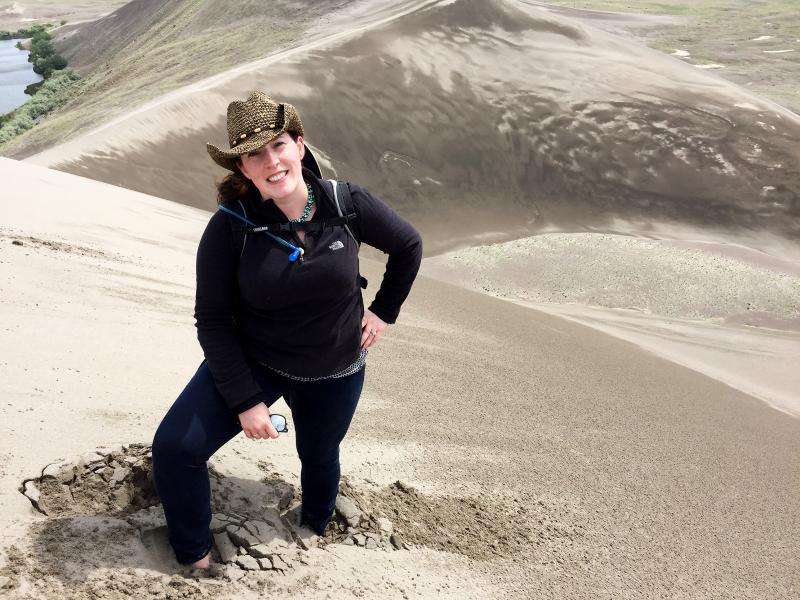Professor will use an array of colors to study the Red Planet

A Purdue University professor is part of the team of scientists preparing the next rover to visit Mars in 2020 to pave the way for future human missions.
The Mars 2020 rover will be equipped with seven sophisticated instruments to study the Martian environment, determine the potential habitability of the planet and search for signs of ancient Martian life, according to NASA. It will join the Mars Science Laboratory rover, Curiosity, that landed in 2012 and has had its mission extended indefinitely.
Briony Horgan, an assistant professor of earth, atmospheric and planetary sciences, is helping design and test the mast-mounted camera with zoom capability, or Mastcam-Z. It is one of the primary instruments that will be used by the Mars 2020 rover.
Mastcam-Z is a camera system that can perform spectroscopic experiments and is equipped with a wheel of color filters that will allow it to tune in to specific wavelengths of light. The absorption of light at different wavelengths is what gives minerals and rocks their characteristic colors and can be used to identify the material from which they formed. The team will use the equipment to gather information about the minerals in Martian rocks and better understand the composition of the planet's surface.
"We will look at a wide array of colors on the Red Planet," Horgan said. "The reflected light from rocks at wavelengths of different colors allows us to identify the minerals, which can provide insight into the current and past conditions of the planet. For instance, different combinations of minerals tell us whether a particular Martian rock was once covered by water or if there was a volcanic eruption in the area."

Mastcam-Z also can take panoramic and 3-dimensional pictures, which will aid in the rover's navigation and provide important context to the spectroscopic information, she said.
"We will be able to see the color, shape and texture of the rocks, and know what they are made of – it is really an amazing tool," Horgan said. "It will also capture some beautiful pictures of the planet. As is often the case when doing work in space, it will be a mission rich with science and beauty."
The geologic features identified by the Mastcam-Z team of scientists also will help direct the mission's search for signs of life. If the rocks in an area indicate it might once have been the bottom of a lake, then the science team might decide to send the rover over for a closer look and to use other equipment onboard to test for organic compounds and biosignatures, she said.
The Mastcam-Z team is led by Jim Bell of Arizona State University in Tempe, and the instrument will be built at Malin Space Science Systems in California.
The first three months after the rover lands in February 2021 will be the most critical as the science team checks and calibrates the equipment, Horgan said. She will be at mission control at the Jet Propulsion Laboratory, or JPL, during this time, and will live on Martian time, which includes a 30-minute longer day than that on Earth. After that initial phase she will return to Purdue to interpret the information the rover sends back, as well as tailor the mission's experiments to what the rover is seeing, she said.
The Mars 2020 rover also will collect samples to bring back to Earth, where the team can use additional tools and technology to look for biosignatures and evaluate whether Mars ever hosted life, she said.
Horgan's current research team includes current and incoming Purdue graduate students Sheridan Ackiss, Noel Scudder and Marie McBride, and undergraduate students Rachel Maxwell, Ellen Czaplinski, John Riccione and Aaron Campbell. Some of them may join her at JPL for the primary mission.
Horgan also is a key player in the selection of a landing site for the rover. More than 30 sites were proposed by the broad Mars scientific community. Horgan co-created a rubric that was used to judge all of the sites and narrowed the selection to eight. The remaining sites will be evaluated and discussed at the next landing site workshop in January 2017.
There have been four successful Mars rovers: Sojourner, Opportunity, Spirit and Curiosity. Opportunity and Curiosity are still active.
Provided by Purdue University





















